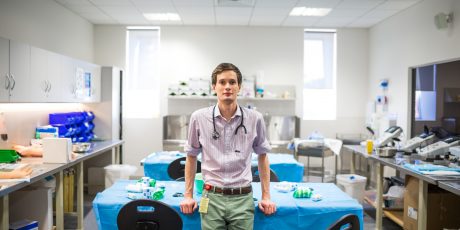
Do we still need pagers in healthcare?
Pagers have long been an additional ‘appendage’ for clinicians, mainly for physicians in specialty roles where patients need to be closely monitored and updates are critically time sensitive. Back in the day, this made sense. The pager was a communication tool that delivered a quick and succinct message to the recipient and urged immediate action; indeed, I remember moments in my childhood when my mother (then an internist) would spring up from whatever she was doing when her pager went off, exclaiming “where’s my beeper, where’s my beeper?!” I also remember some of the ‘connected’ kids in high school would have pagers, presumably to conduct covert communications requiring speed and the ability to reach you wherever you are. Pagers definitely used to be cool.
Learn more about Cisco’s Healthcare solutions
That was a long time ago. Our mobile technology has come a long way since then, and while most of us definitely have an extra appendage, it’s rarely a pager – it’s most likely a smartphone. Our smartphones are more than capable of notifying us of anything – with speed, agility and immediacy – not to mention countless ways to do so.
Clinicians no longer need to be chained to their pagers or their desk phones while waiting to do their work.
But as clinicians, we will sometimes tell you: “Oh, but it’s a bit different for healthcare.” I’ve been wondering about this ‘difference’ for a while now – is it really that different nowadays? It’s not that clinicians enjoy carrying many different devices on our person all the time – or “PFD syndrome” as I’ve also heard it called (“Pants Falling Down syndrome”). I believe it is the risk-averse nature of the healthcare industry as a whole, and those who work within it, that make it challenging to adopt new practices and technologies. In order for anything to be adopted in healthcare today, a specific recipe needs to be followed:
- An acknowledgment that the current practice isn’t working or could be improved
- An appetite for change or transformation
- A willingness to try new things
- Available options to support an improved process
- A test environment to trial one or more of these processes
- Clinical champions willing to not only try the new process, but who will act as advocates on a larger scale to gain widespread adoption
- And, in the case of technology, recognizing that with clinicians you don’t have ‘three strikes and you’re out’. You have one strike to make this work, otherwise you’re out. (Yes we can be a difficult bunch, we are dealing with patients’ lives after all.)
At this point it might sound easier to just keep the darned pagers around.
But there are organizations within our midst who have tackled this daunting process with some amazing results. London Health Sciences Centre (LHSC) in London, Ontario, is a shining Canadian example of how a healthcare organization decided to examine what else is possible in order to find a better way. Not only did they find a better way, but the way in which they went about it was also quite unique. The organization put out a broad call to ask for anyone who might be interested in solving a clinical business problem around communication and pagers. Their plan was to host a Hackathon – which involves a group of individuals committed to solving this particular problem – over the course of two short days. Hackathons are not for the faint of heart – people are working non-stop, taking only very short breaks to eat and sleep as the clock is ticking fast. It might seem unreasonable that a problem of significant magnitude could be solved in only two days, but I think we have all seen the power of teams and how mountains can get moved when everyone sets their mind on a common goal. Individuals from all across the LHSC organization – even as far as finance – came together to participate, and the results were very successful.
Believe me when I say this is healthcare transformation at its very best.
Now, clinicians at LHSC can use their homegrown application to distinguish and dictate how they want to be contacted on their mobile devices. For example, a specialist who is on call may select her first preference of contact to be ‘text me on my mobile phone’, then ‘call my private practice line’, then ‘call me on my mobile phone’. Another’s might be ‘send me an instant message to my mobile’, then ‘call me at my cottage number’, then, ‘call my mobile’. The ability to set different and personalized presence preferences is not only convenient for the person wanting to contact the specialist, but also empowers the specialist to take charge of their contact details in a much more detailed manner than with a simple pager. Clinicians no longer need to be chained to their pagers or their desk phones while waiting to do their work. And assets like those desk phones can now be re-purposed throughout other parts of the organization where they are needed.
To some, this may not seem like a huge change on a systemic level, but believe me when I say this is healthcare transformation at its very best, and it starts here and with organizations like LHSC, who does so much more – stay tuned for the next post!
Like what you see? SUBSCRIBE NOW and never miss another blog.
Tags:



